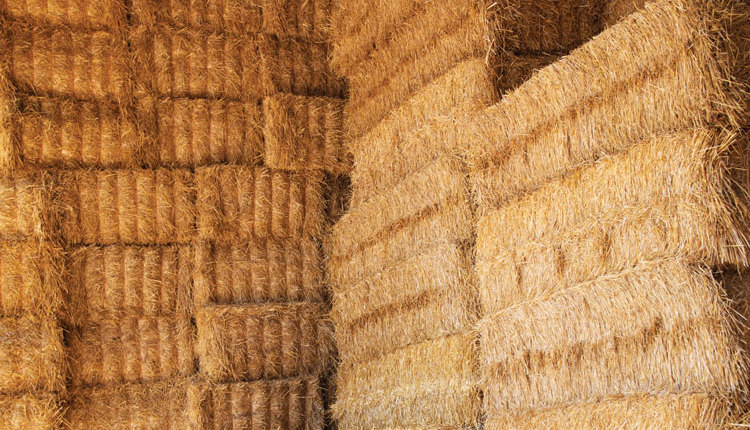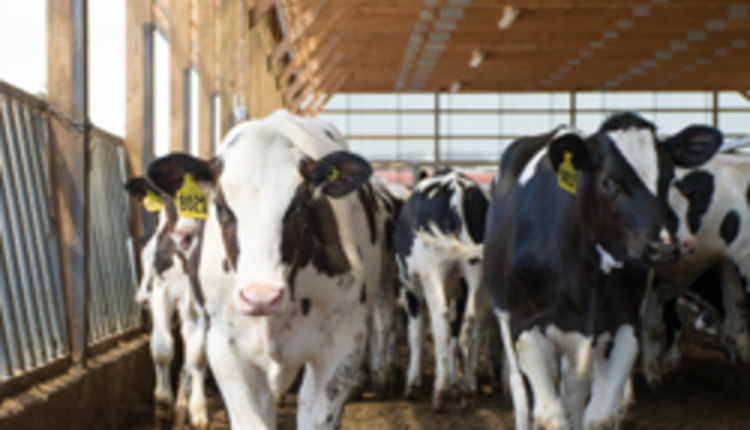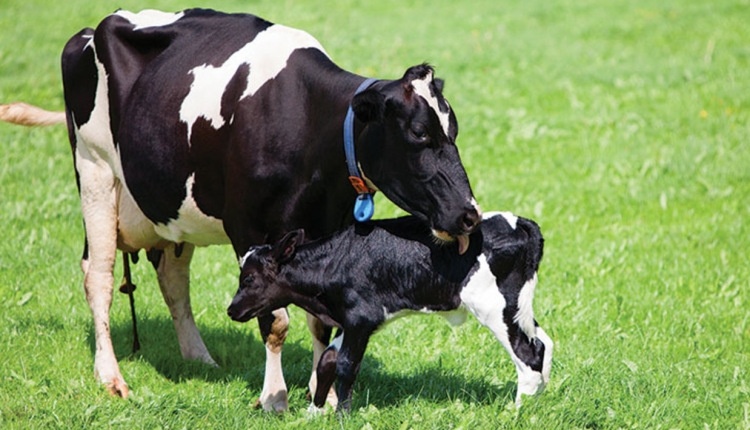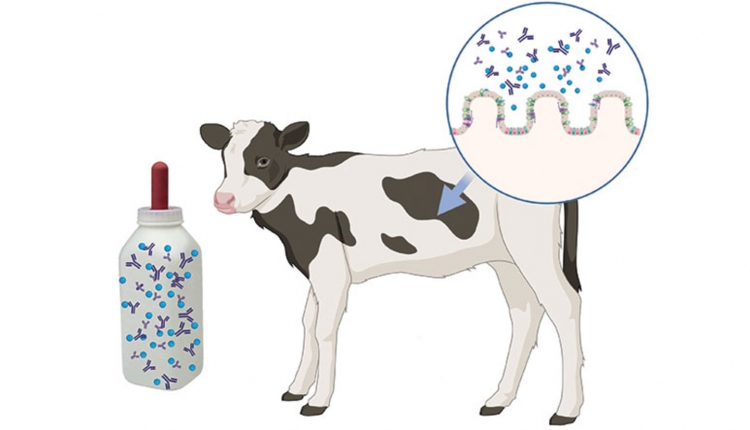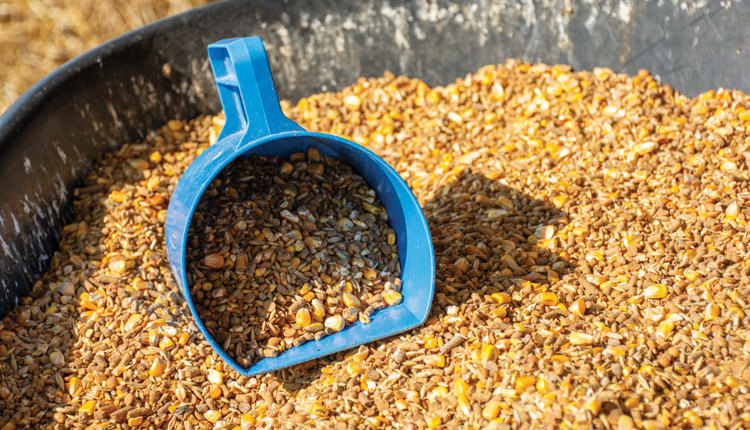The author is the principal in Adhil, LLC, a St. Louis-based consulting firm.
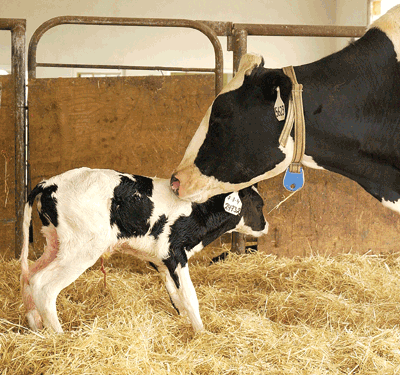
While 24 months of age at first calving generally has been accepted as a reasonable goal, some have even suggested it should be as low as 20 to 22 months. But the reality is that little progress (less than 3 weeks) has occurred over the last 16 years towards meeting that goal.
This was among the findings of the USDA National Animal Health Monitoring System (NAHMS) surveys which began with the 1991 National Dairy Heifer Evaluation Project. There were surveys again in 1996 and 2002 in major dairy states. More recently, the 2007 study was conducted in 17 of the nation's major dairy states, representing 79.5 percent of U.S. dairy operations and 82.5 percent of U.S. dairy cows. Information was collected from 2,194 dairy operations.
There was a progressive drop in age at first calving with herd size as small (less than 100 cows), medium (100 to 499), and large (500 or more) herds averaging 25.4, 24.8, and 24.0, respectively.
Losses too high . . .
Preweaning death loss went up in 1996 to 11.1 percent from 8.4 percent in 1991. However, in 2002 and 2007, it came back down to 8.7 and 7.8 percent. But that was accompanied in 2007 by 6.5 percent stillbirths (not recorded in previous surveys). So, in essence, 14 percent of the calf crop was lost each year. Cutting that in half would be an attainable and beneficial achievement.
Of those deaths among calves born alive, scours continues to be the major problem at about 57 percent, with respiratory being next at 23 percent.
After-weaning death loss dropped slightly in 2007 to 1.8 percent. But respiratory related deaths still were nearly 50 percent of the reason for those deaths, followed by other known causes, unknown causes, and then scours at 13 percent. The bigger issue is respiratory problems not resulting in death, but that any significant respiratory problem impairs those heifers for life.
There has been major improvement in early separation of calves after birth through the years. But the numbers show that still nearly one-fourth of operations do not separate calves from their dams until more than 12 hours after birth. Nearly another one-fourth are not separated for nearly 12 hours.
There was an unexpected rise to 45 percent of operations having calves get their first colostrum by nursing their mother. The problem with this practice is that the amount and quality of colostrum the calf receives is not controlled. This situation relates to studies that show 40 to 50 percent of calves nursing do not get adequate antibody protection from colostrum received that way. Consequently, only 50 percent of calves received hand-fed colostrum which was a backward step.
Most likely, calves spend more time in the calving pen with smaller herds where checking is less frequent. But a Minnesota study conducted several years ago found that death loss was 20 percent when calves were left with the cow between 25 and 48 hours but 5 percent when left there between 2 and 6 hours.
It is now recommended that calves receive 4 quarts of colostrum within the first 4 hours after birth and another 2 quarts by the end of their first 24 hours. However, only about 31 percent of calves could have qualified for that recommendation in 2007. This was a slight reduction from 34 percent in 1996 but a rise from 26 percent in 1991.
Another part of a good colostrum program is testing for antibody levels. This especially is important if the first-day quantity of colostrum fed is not more than four quarts . . . which applies to nearly 70 percent of calves in 2007. According to the 2007 report, the percentage of operations that tested for colostrum were: 7.6 percent of herds with less than 100 cows, 19.8 percent of herds with 100 to 499 cows, and 45.2 percent of herds with 500 or more cows. Of all those herds that did test for immunoglobulin levels, 44 percent used a colostrometer and 42 percent relied on visual appearance.
Weaning age of 8.2 weeks in 2007 was similar to 8.4 in 2002. The average was 8.2 weeks in 1996 and 7.9 in 1991.
Roughly one-third of operations weaned at 8 weeks of age, but 25 percent more were weaned beyond that age, while 38 percent weaned at a younger age. This average age at weaning did not differ much among herd size being 8.2 weeks for herds with less than 100 cows, 7.9 weeks for herds with 100 to 499 cows, and 9.1 weeks for herds with 500 or more cows.
The other significant weaning age peaks were 18 percent at 6 weeks and 10 percent at 12 weeks. This indicates that age at weaning probably is the primary factor in determining when operations wean their calves, rather than meeting a specific feeding need or condition of the calf. In the first case, it is the typical practice and convenience that determines when calves are weaned, while in the second case the eating situation and condition of the calf determines at what age they will be weaned.
Why wean when?
In the first case, it is factors like the number of hutches or individual calf spaces available and the timing (2 or 3 months of age) as well as subsequent movement of calves into groups that are likely the determining factors. In the second case, a specific milk or milk replacer program along with provision of a good starter and clean water defining calf performance probably are the determining factors. There is opportunity for most operations to wean at an earlier age.
While contract rearing of calves and heifers tripled from 1.6 percent in 1991 to 5 percent in 1996, 2002 results indicated a 30 percent drop to 3.6 percent from 1996. In 2007, contract rearing increased to 9.3 percent. Further evidence of contract rearing may be found in "animals not housed on operation" being 4.7 percent for unweaned heifers and 7.7 percent for weaned heifers as a percent of operations.
In many categories of the survey, there is a pattern that large herds achieved better results. This likely is due to these herds having better facilities, separate work groups that are managed more closely with established protocols, and more financial and other resources. There are other extensive data to be found in this report at http://www.aphis.usda.gov/vs/ceah/ncahs/nahms/dairy/
There is good general agreement on goals for raising calves and heifers - such as for death and health losses, body weight and height parameters, and age at first calving. But since these are largely not being achieved, this would indicate that goal setting is not likely limiting. Instead, it seems that priority and commitment in achieving those goals has not been established and practiced.
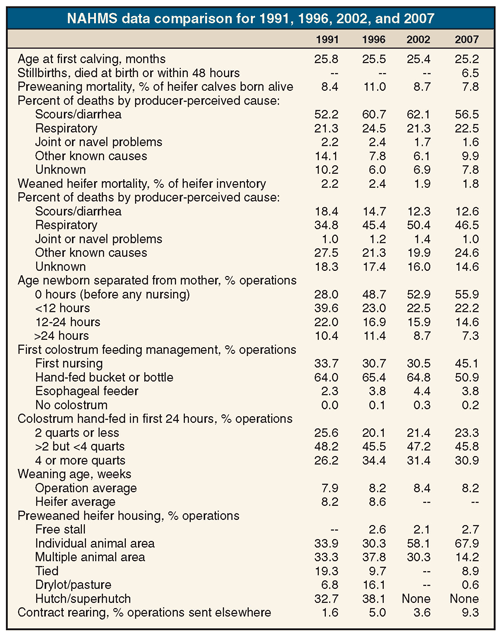
Click here to return to the Calf & Heifer E-Sources
0906_423

While 24 months of age at first calving generally has been accepted as a reasonable goal, some have even suggested it should be as low as 20 to 22 months. But the reality is that little progress (less than 3 weeks) has occurred over the last 16 years towards meeting that goal.
This was among the findings of the USDA National Animal Health Monitoring System (NAHMS) surveys which began with the 1991 National Dairy Heifer Evaluation Project. There were surveys again in 1996 and 2002 in major dairy states. More recently, the 2007 study was conducted in 17 of the nation's major dairy states, representing 79.5 percent of U.S. dairy operations and 82.5 percent of U.S. dairy cows. Information was collected from 2,194 dairy operations.
There was a progressive drop in age at first calving with herd size as small (less than 100 cows), medium (100 to 499), and large (500 or more) herds averaging 25.4, 24.8, and 24.0, respectively.
Losses too high . . .
Preweaning death loss went up in 1996 to 11.1 percent from 8.4 percent in 1991. However, in 2002 and 2007, it came back down to 8.7 and 7.8 percent. But that was accompanied in 2007 by 6.5 percent stillbirths (not recorded in previous surveys). So, in essence, 14 percent of the calf crop was lost each year. Cutting that in half would be an attainable and beneficial achievement.
Of those deaths among calves born alive, scours continues to be the major problem at about 57 percent, with respiratory being next at 23 percent.
After-weaning death loss dropped slightly in 2007 to 1.8 percent. But respiratory related deaths still were nearly 50 percent of the reason for those deaths, followed by other known causes, unknown causes, and then scours at 13 percent. The bigger issue is respiratory problems not resulting in death, but that any significant respiratory problem impairs those heifers for life.
There has been major improvement in early separation of calves after birth through the years. But the numbers show that still nearly one-fourth of operations do not separate calves from their dams until more than 12 hours after birth. Nearly another one-fourth are not separated for nearly 12 hours.
There was an unexpected rise to 45 percent of operations having calves get their first colostrum by nursing their mother. The problem with this practice is that the amount and quality of colostrum the calf receives is not controlled. This situation relates to studies that show 40 to 50 percent of calves nursing do not get adequate antibody protection from colostrum received that way. Consequently, only 50 percent of calves received hand-fed colostrum which was a backward step.
Most likely, calves spend more time in the calving pen with smaller herds where checking is less frequent. But a Minnesota study conducted several years ago found that death loss was 20 percent when calves were left with the cow between 25 and 48 hours but 5 percent when left there between 2 and 6 hours.
It is now recommended that calves receive 4 quarts of colostrum within the first 4 hours after birth and another 2 quarts by the end of their first 24 hours. However, only about 31 percent of calves could have qualified for that recommendation in 2007. This was a slight reduction from 34 percent in 1996 but a rise from 26 percent in 1991.
Another part of a good colostrum program is testing for antibody levels. This especially is important if the first-day quantity of colostrum fed is not more than four quarts . . . which applies to nearly 70 percent of calves in 2007. According to the 2007 report, the percentage of operations that tested for colostrum were: 7.6 percent of herds with less than 100 cows, 19.8 percent of herds with 100 to 499 cows, and 45.2 percent of herds with 500 or more cows. Of all those herds that did test for immunoglobulin levels, 44 percent used a colostrometer and 42 percent relied on visual appearance.
Weaning age of 8.2 weeks in 2007 was similar to 8.4 in 2002. The average was 8.2 weeks in 1996 and 7.9 in 1991.
Roughly one-third of operations weaned at 8 weeks of age, but 25 percent more were weaned beyond that age, while 38 percent weaned at a younger age. This average age at weaning did not differ much among herd size being 8.2 weeks for herds with less than 100 cows, 7.9 weeks for herds with 100 to 499 cows, and 9.1 weeks for herds with 500 or more cows.
The other significant weaning age peaks were 18 percent at 6 weeks and 10 percent at 12 weeks. This indicates that age at weaning probably is the primary factor in determining when operations wean their calves, rather than meeting a specific feeding need or condition of the calf. In the first case, it is the typical practice and convenience that determines when calves are weaned, while in the second case the eating situation and condition of the calf determines at what age they will be weaned.
Why wean when?
In the first case, it is factors like the number of hutches or individual calf spaces available and the timing (2 or 3 months of age) as well as subsequent movement of calves into groups that are likely the determining factors. In the second case, a specific milk or milk replacer program along with provision of a good starter and clean water defining calf performance probably are the determining factors. There is opportunity for most operations to wean at an earlier age.
While contract rearing of calves and heifers tripled from 1.6 percent in 1991 to 5 percent in 1996, 2002 results indicated a 30 percent drop to 3.6 percent from 1996. In 2007, contract rearing increased to 9.3 percent. Further evidence of contract rearing may be found in "animals not housed on operation" being 4.7 percent for unweaned heifers and 7.7 percent for weaned heifers as a percent of operations.
In many categories of the survey, there is a pattern that large herds achieved better results. This likely is due to these herds having better facilities, separate work groups that are managed more closely with established protocols, and more financial and other resources. There are other extensive data to be found in this report at http://www.aphis.usda.gov/vs/ceah/ncahs/nahms/dairy/
There is good general agreement on goals for raising calves and heifers - such as for death and health losses, body weight and height parameters, and age at first calving. But since these are largely not being achieved, this would indicate that goal setting is not likely limiting. Instead, it seems that priority and commitment in achieving those goals has not been established and practiced.

0906_423


